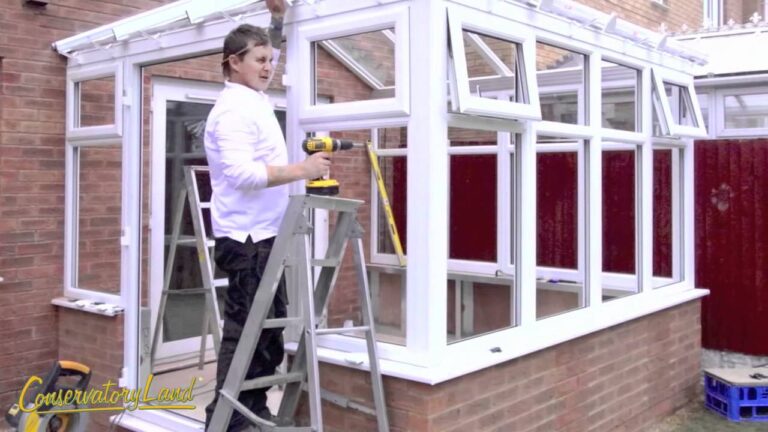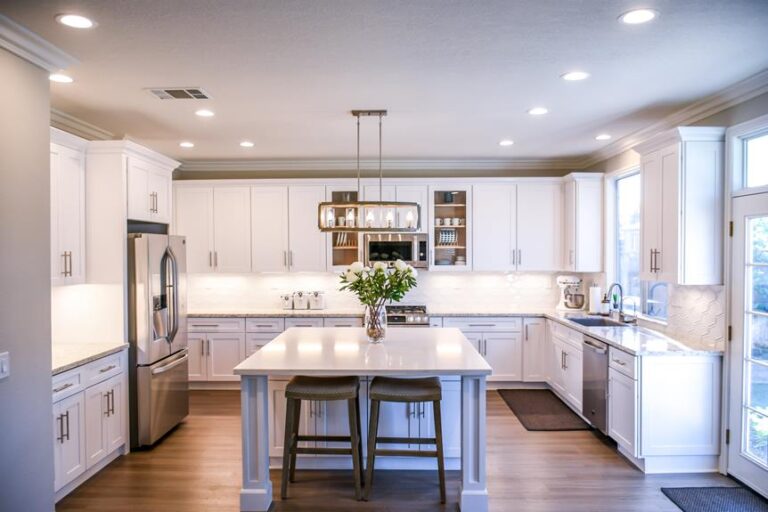Conservatory Planning Examples
When embarking on the journey of adding a conservatory to one’s property, the variety of planning examples serves as both a blueprint and a source of inspiration. From the complexities of navigating planning permissions to the subtle decisions regarding materials and design, each element plays a crucial role in the realisation of a conservatory that not only adheres to legal requirements but also aligns with the homeowner’s vision and the property’s aesthetic.
However, the path to a successful conservatory project involves more than just understanding these examples; it demands a deeper exploration of how these elements interconnect and influence one another, which we shall unravel further.
Key Takeaways
- Meticulous planning ensures conservatories blend with existing structures and meet homeowner vision.
- Detailed planning aids in navigating legal frameworks and obtaining necessary permissions.
- Lessons from successful projects provide valuable insights for overcoming planning challenges.
- Special considerations for historical properties and environmental impact are crucial for compliance and aesthetics.
Understanding the Basics of Conservatory Design
Embarking on the journey of conservatory construction necessitates a meticulous planning phase, underlining its pivotal role in the realisation of a functional and aesthetically pleasing extension. This initial step ensures that the chosen materials, whether wood, aluminium, or PVCu, alongside features such as expansive windows and roof lanterns, harmonise with the existing structure while optimising natural light.
Importance of Planning in Conservatory Construction
Understanding the fundamentals of conservatory design is a pivotal step in constructing a space that not only complies with legal requirements but also enhances the quality of living through improved natural light and space utilisation.
Through conservatory planning examples and PC for sales rep templates window conservatory planning, one navigates the complexities of obtaining planning permission conservatory demolished, ensuring the project respects both legal frameworks and communal aesthetics.
Detailed Conservatory Planning Examples
Transitioning from the foundational aspects of conservatory design, we now explore intricate conservatory planning examples.
Through case studies of successful projects, we will illuminate the critical lessons learned, highlighting the significance of meticulous planning and adherence to regulations.
This section aims to provide valuable insights into overcoming planning challenges, serving as a comprehensive guide for future conservatory endeavours.
Case Studies of Successful Conservatory Projects
Examining successful conservatory projects offers invaluable insights into the meticulous planning and adherence to regulations that underpin their achievements.
From the Victorian-style conservatory in a conservation area to the lean-to within property bounds, each case exemplifies strategic compliance.
Whether it’s a terraced house’s rear extension or a semi-detached’s modern glazed addition, these projects highlight the importance of detailed planning and regulatory knowledge for successful conservatory integration.
Lessons Learnt from Planning Challenges
Building upon the insights from successful conservatory projects, this section explores the challenges encountered during the planning phase and the valuable lessons learned in overcoming them.
- Understanding and adhering to size restrictions and location considerations is crucial.
- Adjustments to conservatory styles and roof types often secure planning permission.
- Effective communication during neighbour consultations fosters community support and compliance.
These strategies ensure a smoother planning process.
Tools and Templates for Conservatory Sales Representatives
In the realm of conservatory sales, utilising the correct tools and templates is crucial for simplifying the sales journey and improving client engagement.
PC templates act as a basic framework for sales representatives, enabling the effective showcasing of conservatory options, while employing the most effective techniques in sales presentations can greatly enhance the customer’s comprehension and admiration of the product.
These methods not only enhance the sales process but also guarantee a memorable and convincing customer experience.
Utilising PC Templates for Efficient Sales
Leveraging PC templates significantly enhances the efficiency of sales representatives by streamlining the creation of proposals and contracts for conservatory sales. By using these templates, sales reps can:
- Ensure consistency in messaging and branding, fostering a sense of trust and belonging among clients.
- Customise details to suit each client’s unique needs, demonstrating attention to detail and care.
- Save time and effort, focusing more on nurturing client relationships and closing deals strategically.
Best Practices for Conservatory Sales Presentations
To elevate the art of selling conservatories, sales representatives can harness a variety of tools and templates designed for impactful presentations. These tools ensure that clients are engaged and informed throughout the decision-making process. Utilising interactive 3D visualisations, customer testimonials, detailed cost breakdowns, and personalised virtual consultations fosters a sense of belonging and investment.
Comparative charts and case studies further highlight the unique advantages, making the customer’s journey towards owning a conservatory an inclusive, well-informed experience.
Navigating Planning Permission for Conservatories
Navigating the intricacies of planning permission is a fundamental step in the conservatory construction process. It requires a clear understanding of when and why such authorisation is necessary. This segment will offer a structured, step-by-step guide to securing permission, demystifying the various regulations and exceptions that apply. It includes size limits and specific rules for different conservatory types. By comprehending these guidelines, homeowners can streamline the approval process, ensuring their conservatory project complies with legal standards.
When and Why Permission is Necessary
Understanding when and why planning permission is required for constructing conservatories is crucial to avoid legal complications and potential fines. Regulations depend on:
- The conservatory’s size, height, and placement.
- The property type and design’s impact on the environment.
- Ensuring development is responsible and compliant with the law.
Seeking expert advice can clarify these requirements, creating a sense of belonging among homeowners going through the planning process.
Step-by-Step Guide to Obtaining Permission
Having established the importance of recognising when planning permission is required for conservatory projects, the next crucial step involves a detailed exploration of how to successfully obtain this permission.
Begin by identifying size and location restrictions, researching area-specific regulations, and consulting with local authorities or specialists.
Understanding exemptions and criteria ensures compliance with building codes, considering factors like height, boundary distances, and design, thus fostering a sense of belonging and community through informed planning.
Special Considerations for Listed Buildings
When planning conservatories for listed buildings, understanding the constraints posed by conservation areas is crucial.
Adapting conservatory designs to harmonise with historical properties requires a meticulous approach, ensuring the new structure respects and preserves the architectural integrity of the existing building.
This process often involves close collaboration with conservation officers to meet stringent regulations and secure the necessary approvals.
Restrictions in Conservation Areas
Navigating the intricate web of restrictions in conservation areas demands a keen awareness of the unique regulations imposed on conservatories to safeguard the historical and architectural essence of these zones. To ensure compliance and approval:
- Secure planning permission, acknowledging the necessity to preserve the area’s significance.
- Adhere to specific design guidelines maintaining the heritage value.
- Consult with local councils or heritage authorities for project endorsement.
Adapting Conservatory Designs for Historical Properties
Building upon the understanding of restrictions in conservation areas, adapting conservatory designs for historical properties calls for a meticulous approach to preserve their heritage while incorporating modern functionality. Achieving approval from local conservation officers is essential.
The design must align with the property’s historical integrity through materials, colours, and architectural features. Seamless integration with the original building ensures the conservation of its historical significance, with experienced architects guiding compliance with conservation guidelines.
Addressing Demolition and Replacement
The process of updating or completely overhauling a conservatory often begins with the crucial steps of demolition and subsequent replacement. This task may not be as straightforward as it appears. Navigating the intricate requirements for planning permission, influenced by factors such as the project’s scale, design, and its potential impact on the environment, demands a thorough understanding and meticulous planning.
Furthermore, ensuring that the new structure complies with the latest building standards and local regulations is essential for a successful and legally sound project.
Planning for Conservatory Demolition
Embarking on the process of demolishing and replacing a conservatory necessitates a thorough understanding of local planning permissions to ensure regulatory compliance.
- Assess if the current conservatory’s size, location, and design require planning permission for demolition.
- Engage with local authorities or a planning expert for guidance on the process and requirements.
- Consider the impact of your new conservatory design on the surrounding environment and community, fostering a sense of belonging and care.
Procedures for Replacing Old Conservatories
In the process of rejuvenating your home with a modern conservatory, understanding the procedures for replacing an old structure is essential, encompassing both demolition and the adherence to current building regulations.
Planning permission might be necessary, depending on the extent of changes. Ensuring compliance with safety and energy efficiency standards is crucial.
Seeking guidance from specialists can facilitate navigating the legalities and technicalities of conservatory replacement effectively, fostering a sense of belonging within your updated space.
Designing Porches and Conservatories Together
As we transition from addressing the intricacies of demolition and replacement in conservatory planning, we now turn our focus to the creative and structural synthesis of designing porches and conservatories together. This approach not only promises to enhance the aesthetic allure and functionality of residential spaces but also emphasises the importance of a seamless integration that resonates with the architectural ethos of the home.
Through careful planning and coordination, the amalgamation of porches with conservatories stands as a testament to innovative design, promising an elevated lifestyle and increased property value.
Integrating Porches with Conservatory Plans
Merging the quaint charm of verandas with the luminous elegance of conservatories offers homeowners a seamless blend of indoor comfort and outdoor allure.
- A unified design ensures a cohesive look, enhancing the home’s aesthetic.
- The combination allows for extra space, be it for seating, storage, or decor.
- Careful planning results in an inviting entrance, symbolising warmth and welcome to all who enter.
Synergising Designs for Aesthetic and Practical Benefits
Synergising porch and conservatory designs not only elevates the home’s aesthetic appeal but also brings about a harmonious blend of functionality and style.
By combining these spaces, homeowners enjoy seamless transitions between indoors and outdoors, maximising natural light.
Thoughtful planning in materials, colours, and styles ensures cohesion, while strategic layout enhances both relaxation and entertainment spaces, fostering a sense of belonging in a versatile, beautifully integrated environment.
Conclusion
Navigating the complexities of conservatory planning requires understanding the nuanced requirements and exemptions for a seamless project execution. To ensure your conservatory journey is successful:
- Verify if your design meets specific size and height restrictions.
- Determine if your conservatory’s location exempts it from needing planning permission.
- Familiarise yourself with additional considerations and exemptions to streamline your planning process.
Frequently Asked Questions
What Are the Planning Rules for Conservatories?
Planning rules for conservatories generally involve restrictions on size, height, and placement, such as limits on single-storey rear extensions and considerations for building close to boundaries, to ensure compliance with local regulations and guidelines.
What are the new conservatoire rules?
The new conservatory rules allow two-storey extensions without full planning permission, even in conservation areas, with a single-storey extension height limit of 4 metres. Conditions depend on the original house area, with restrictions on front or side-facing extensions.
Is it illegal to have a radiator in a conservatory?
Installing a radiator in a conservatory is not illegal; however, compliance with building regulations is essential, particularly regarding energy efficiency. Professional installation is advised to ensure optimal temperature control and minimise running costs.
Do I need an external door between the house and conservatory?
Determining the necessity for an external door between a house and conservatory hinges on building regulations, energy efficiency, and thermal separation considerations. Consulting a professional ensures compliance and optimal integration of the conservatory with your home.






